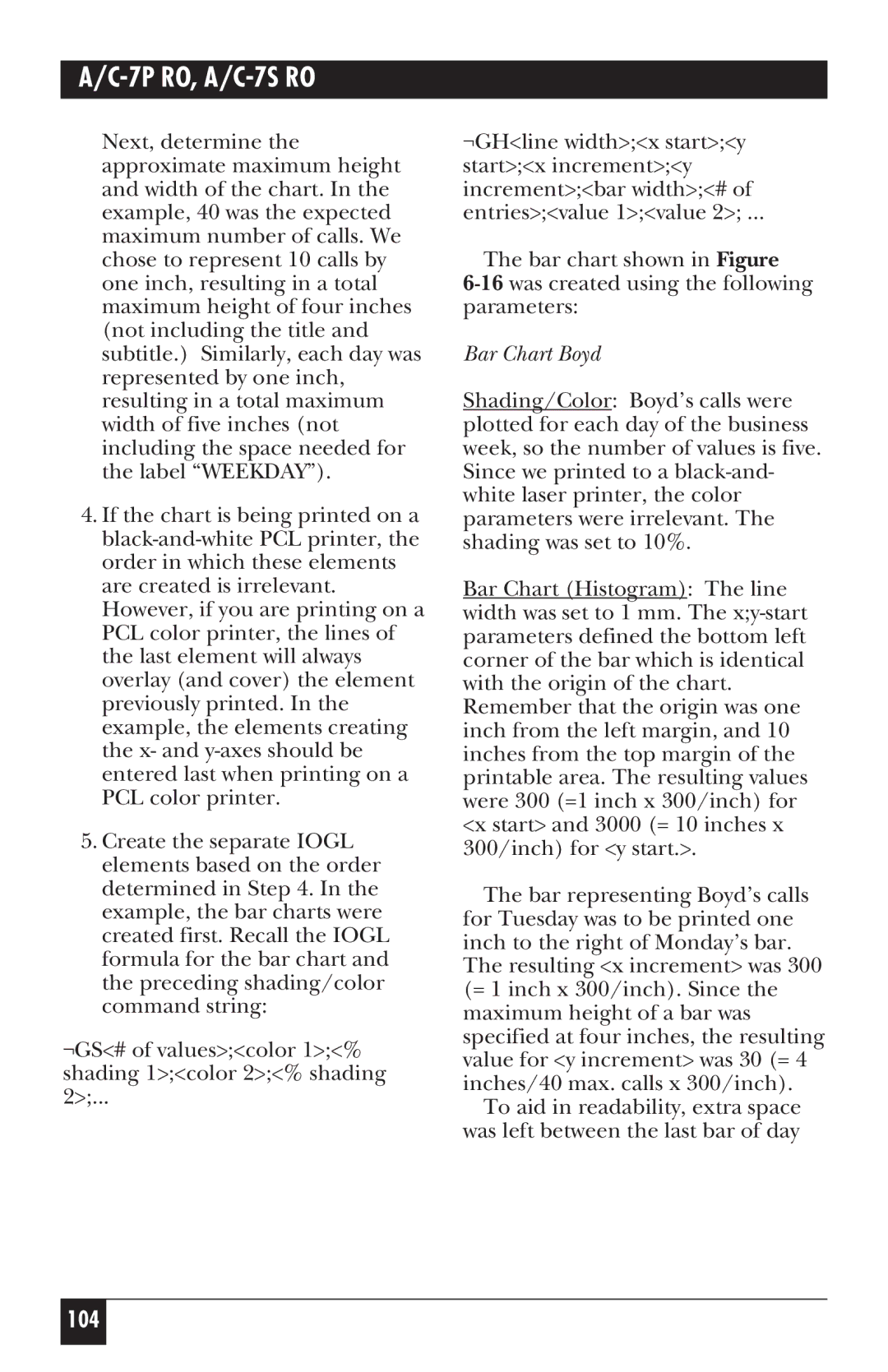
A/C-7P RO, A/C-7S RO
Next, determine the approximate maximum height and width of the chart. In the example, 40 was the expected maximum number of calls. We chose to represent 10 calls by one inch, resulting in a total maximum height of four inches (not including the title and subtitle.) Similarly, each day was represented by one inch, resulting in a total maximum width of five inches (not including the space needed for the label “WEEKDAY”).
4.If the chart is being printed on a
5.Create the separate IOGL elements based on the order determined in Step 4. In the example, the bar charts were created first. Recall the IOGL formula for the bar chart and the preceding shading/color command string:
¬GS<# of values>;<color 1>;<% shading 1>;<color 2>;<% shading 2>;...
¬GH<line width>;<x start>;<y start>;<x increment>;<y increment>;<bar width>;<# of entries>;<value 1>;<value 2>; ...
The bar chart shown in Figure
Bar Chart Boyd
Shading/Color: Boyd’s calls were plotted for each day of the business week, so the number of values is five. Since we printed to a
Bar Chart (Histogram): The line width was set to 1 mm. The
The bar representing Boyd’s calls for Tuesday was to be printed one inch to the right of Monday’s bar. The resulting <x increment> was 300 (= 1 inch x 300/inch). Since the maximum height of a bar was specified at four inches, the resulting value for <y increment> was 30 (= 4 inches/40 max. calls x 300/inch).
To aid in readability, extra space was left between the last bar of day
